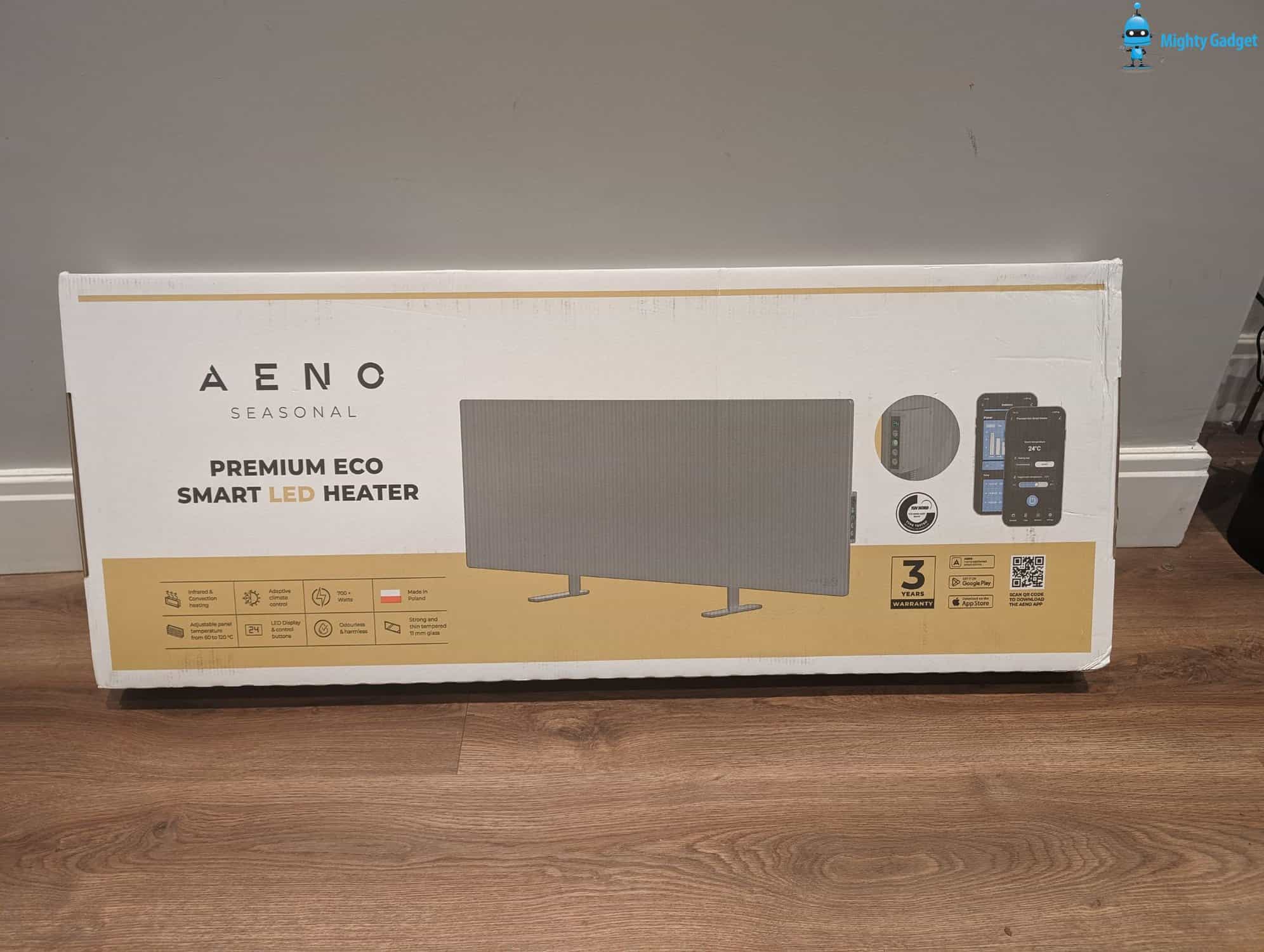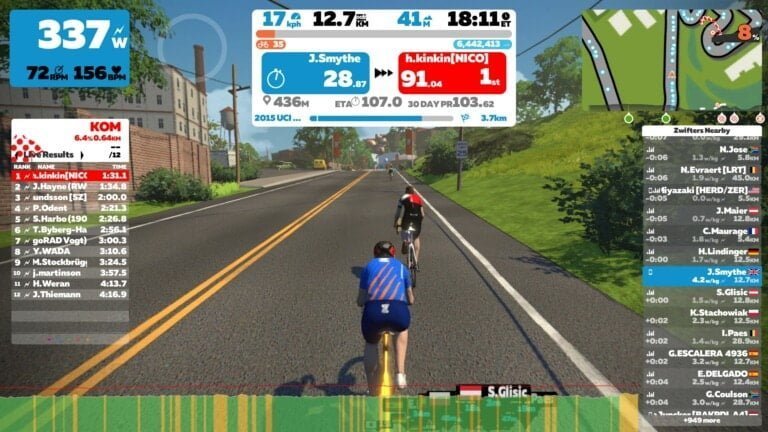Any links to online stores should be assumed to be affiliates. The company or PR agency provides all or most review samples. They have no control over my content, and I provide my honest opinion.
I am a big fan of smart heating, and with the cost of gas and electricity, it has become more important than ever to have greater control over your heating.
My home has gas-powered central heating, so I don’t particularly need an electric heater, but this Aeno Premium Eco Smart LED Heater is superb, albeit quite expensive.
Related Articles
- Haverland SmartWave Self-Learning Electric Radiator Review
- Best Smart Electric Heaters
- Best Smart Thermostatic Radiator Valves
- Best Radiator Fans, Boosters & Reflectors
- TP-Link Kasa Smart Thermostatic Radiator Valve KE100 KIT Review
Specification
- Heating method: Infrared + convection
- Material: Tempered glass
- Maximum power: 700 W+
- Mounting: Wall, Freestanding
- Voltage: 220-240 V, 50 Hz
- Weight: 8.9 kg
- Dimensions: 417 x 1000 x 165 mm (H x W x D)
Key Features
App Controlled
Connect to WiFi and control the heater via the Aeno app. This includes options for scheduling based on time, or using the automation section, you can create advanced schedules based on the weather and other scenarios.
LED display for optimal control
The integrated LED display provides a straightforward and intuitive user interface that allows you to control and adjust the unit manually with ease.
Temperature setting as desired
Manual temperature adjustment gives you full control over the desired heat to achieve a customised and comfortable room temperature. Accurate temperature monitoring: LED display shows both room temperature and desired temperature at the touch of SMART or +/- buttons.
Flexible control options
Either via the buttons directly on the unit or conveniently via the app – you have the choice of how you want to control the radiant heater.
Smart mode for optimal use
Smart mode allows you to maintain the desired room temperature without overheating for efficient use.
The user-friendly power button allows you to easily turn the heater on and off, even in the dark.
Adjustable brightness
Adjust the brightness of the LED display and buttons according to your preferences to ensure comfortable lighting.
Night mode for restful sleep
Night mode reduces the brightness of the display and buttons or turns them off to help you sleep comfortably and undisturbed.
Design / Assembly
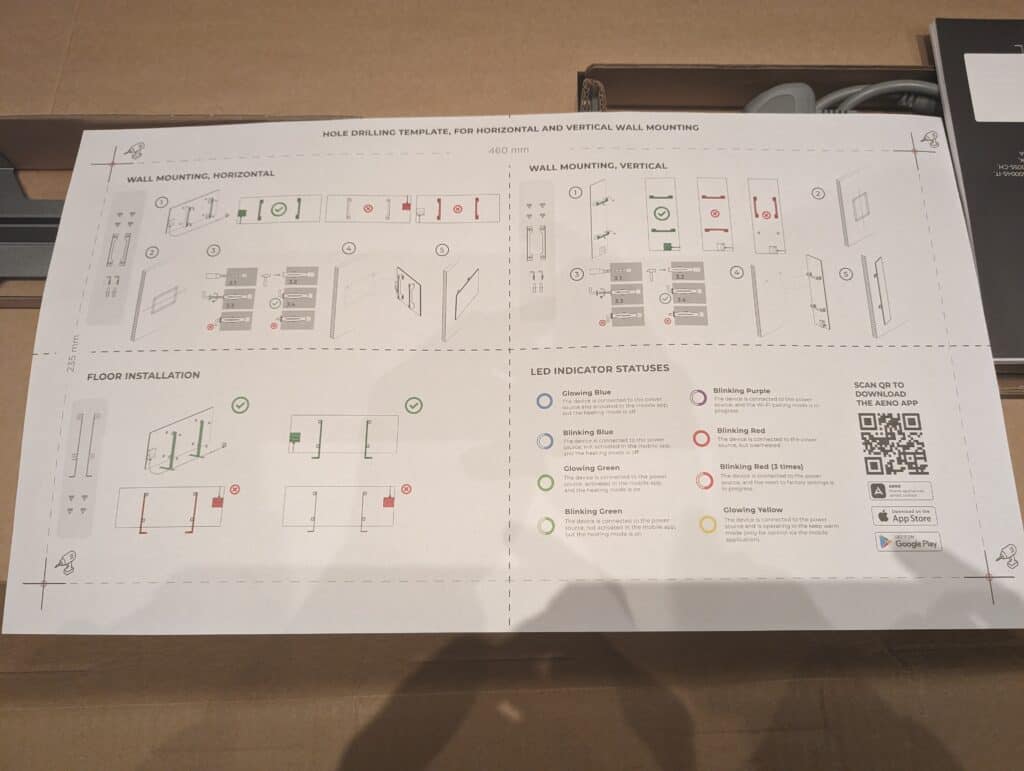
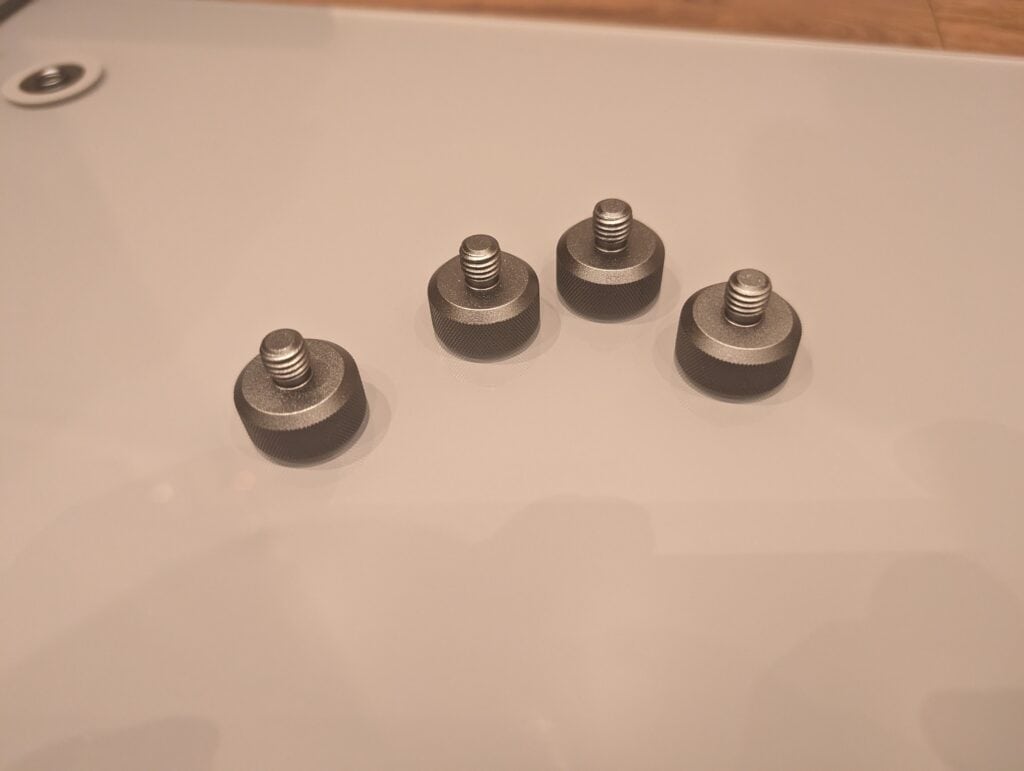

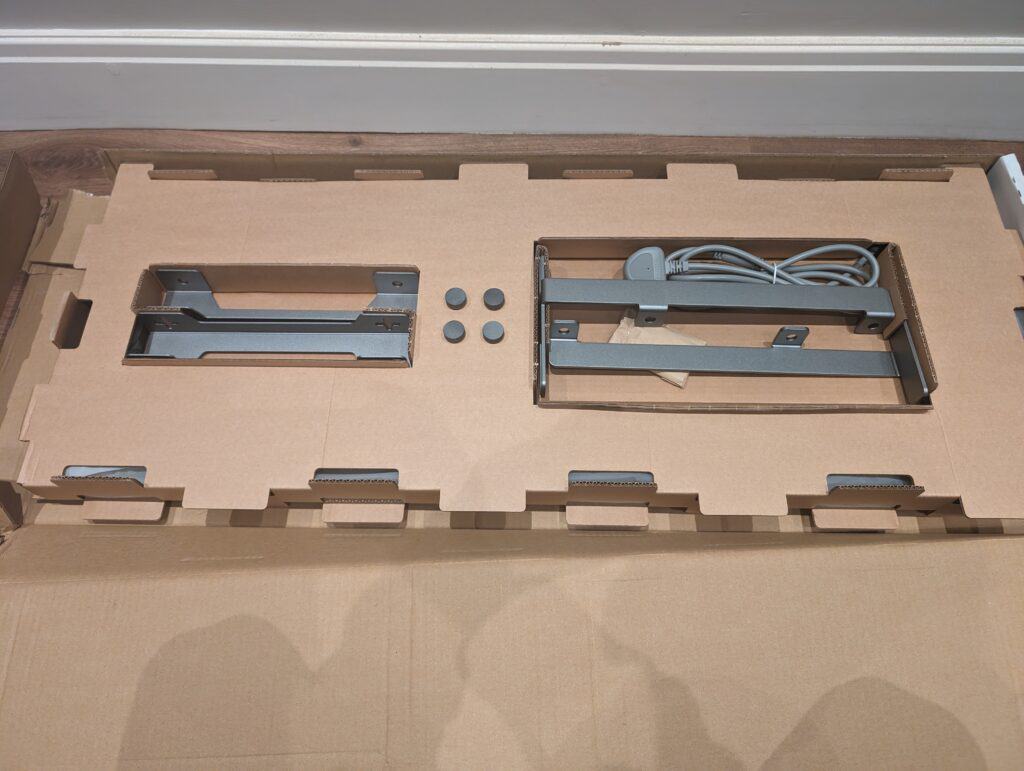
The Aeno heater is attractively designed as far as heaters go, and it is easy to assemble.
You have options to wall mount it or use it freestanding. As I already have a radiator in my office, I assembled it with the legs, which took a couple of minutes. It is just four thumb screws that hold the legs in place.
The heater I was sent is grey, and it has a nice modern look to it and feels well-built. The glass panel is moderately heavy but easy enough for one person to carry around.
The power cord has plenty of length to it, and this is also where the thermometer is located, so you don’t get inaccurate temperature readings.
The physical controls are located on the back right lower edge, which does make them a little inconvenient to use if you want to control it manually. It would have been better on the top edge.
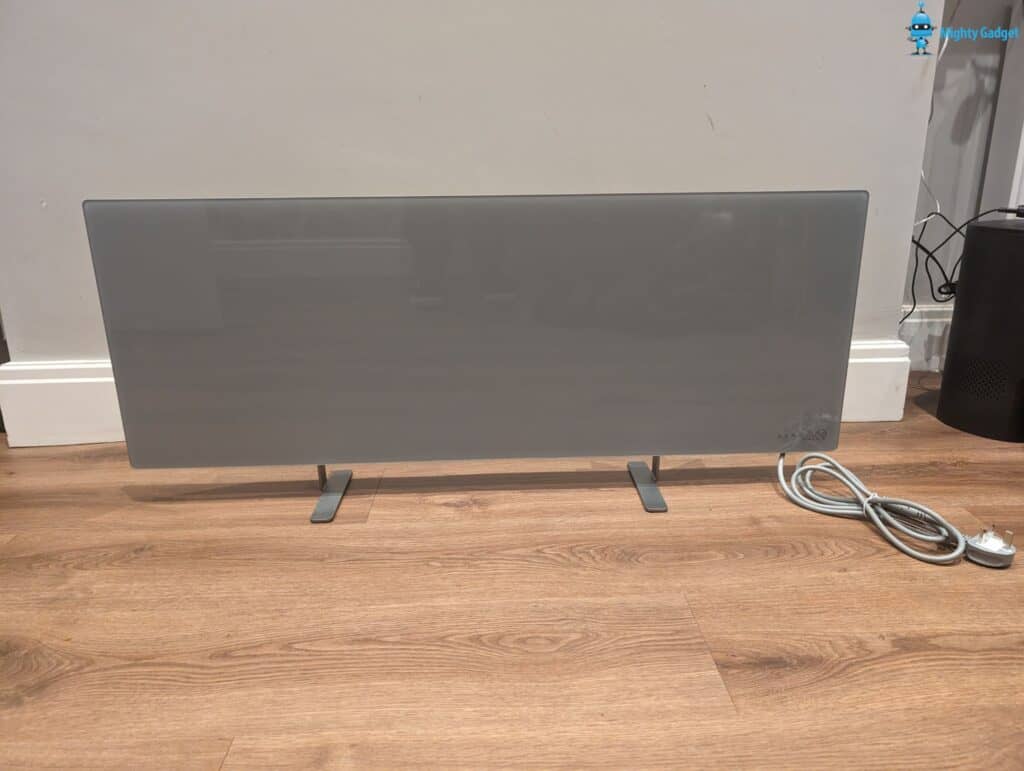
Aeno App / Smart Life
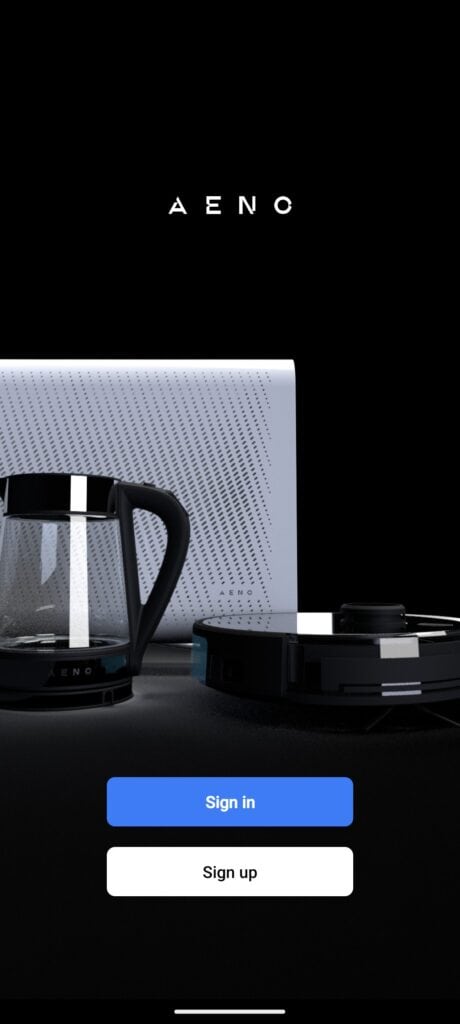
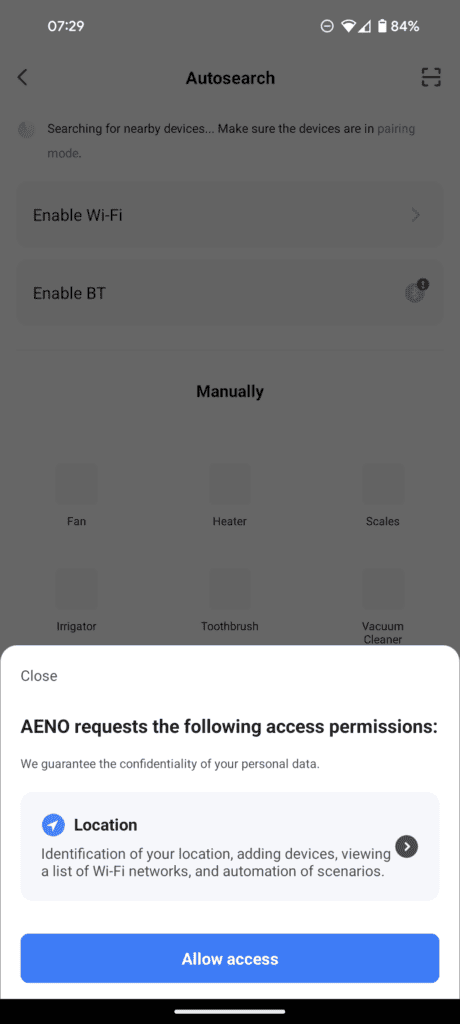
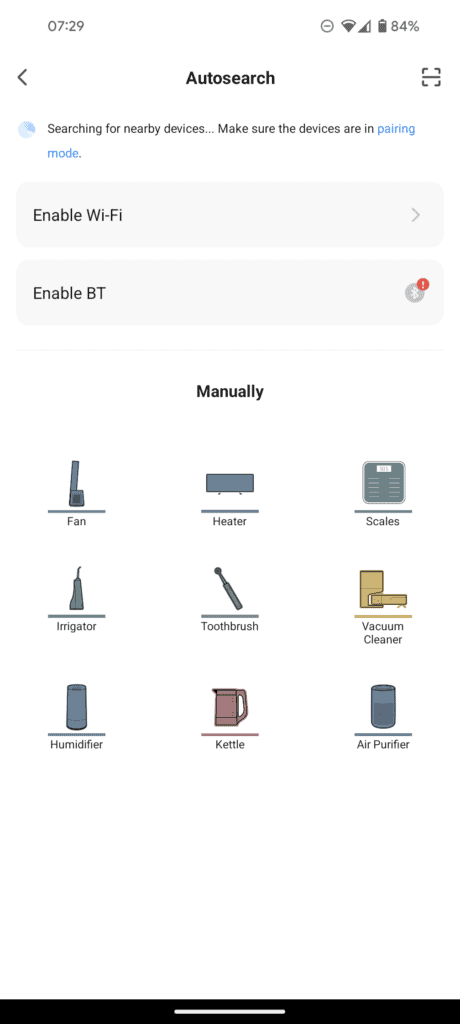
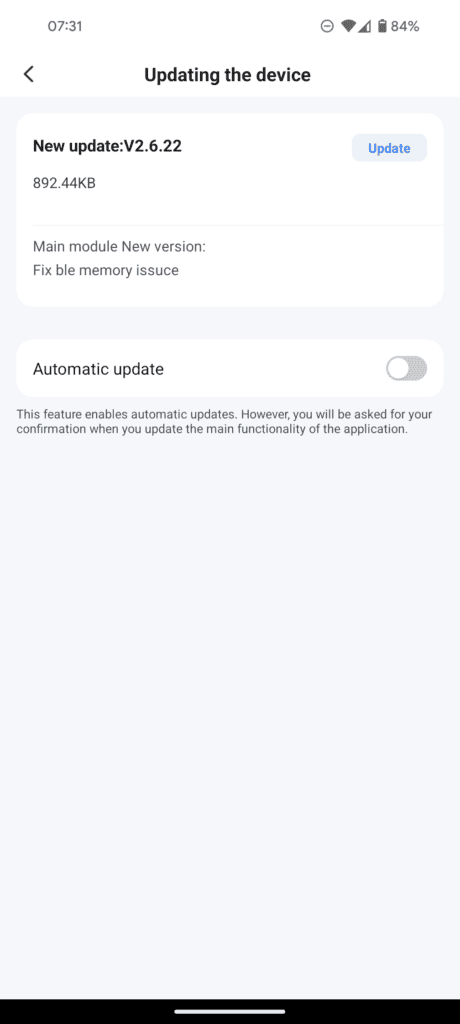
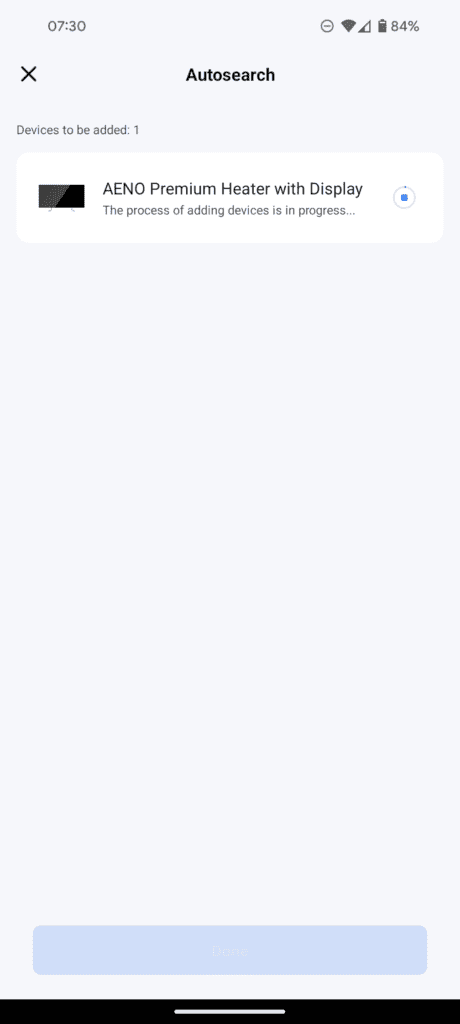
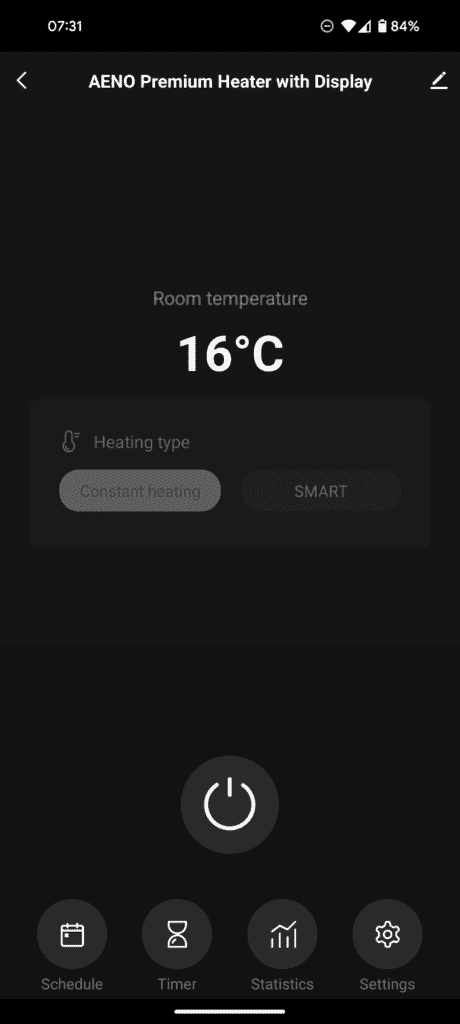
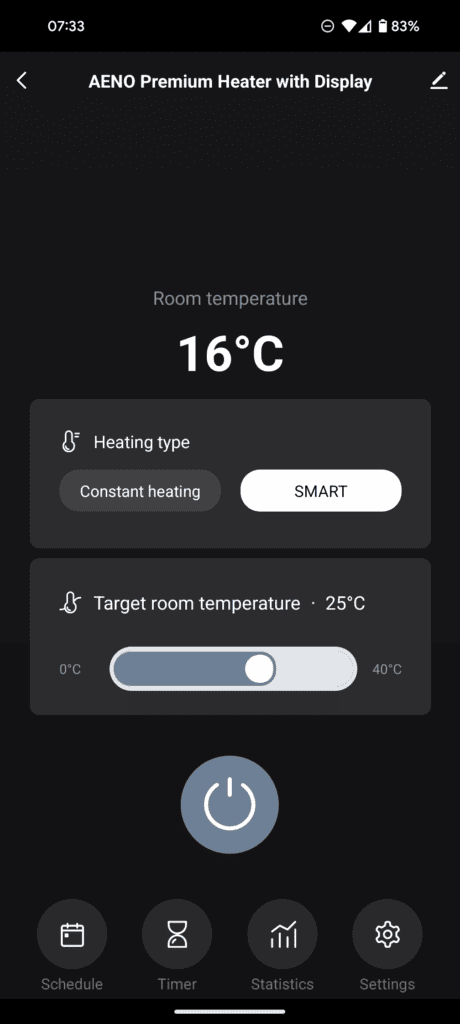
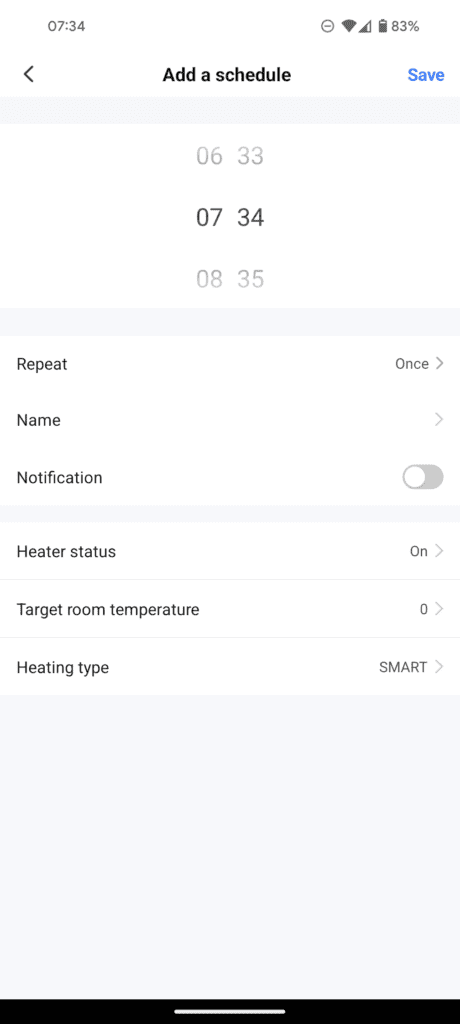
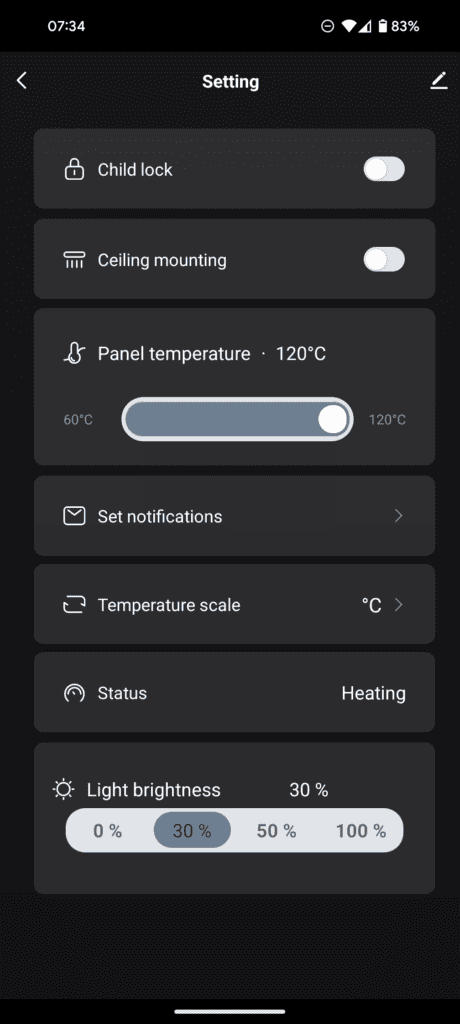
The app is well-designed and easy to use. The app appears to be based on the Smart Life/Tuya app, and you can optionally use Smart Life or the Aeno app.
At first, I set it up with the official app, and it works well with a good range of features.
The main page allows you to switch the heater on/off and then use either constant heating or smart heating. Smart heating uses the thermometer, which is located in the power lead, to work as a thermostat, switching the heating off when you hit the target temperature.
You then have the option to set a timer or a schedule.
The main advantage of using the Smart Life app is that you then have a much wider range of products that can interact with the heater, giving you the potential to create more complex automation.
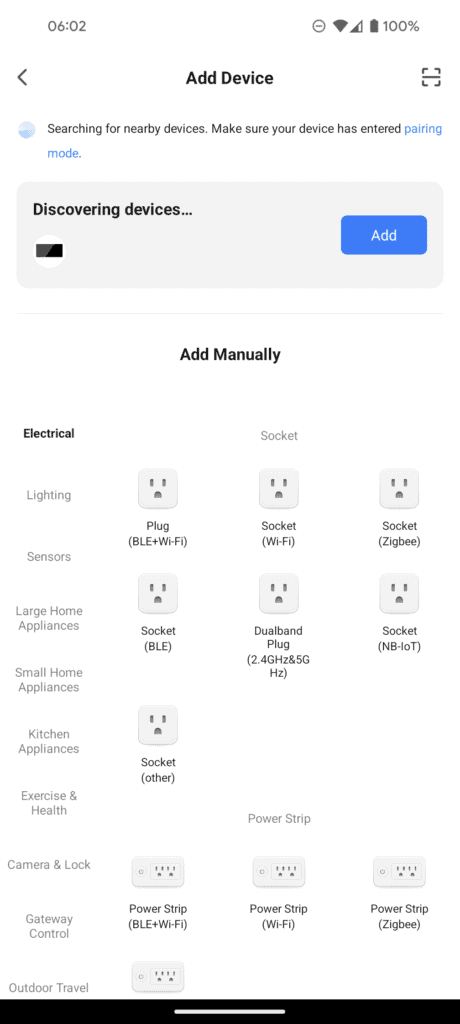
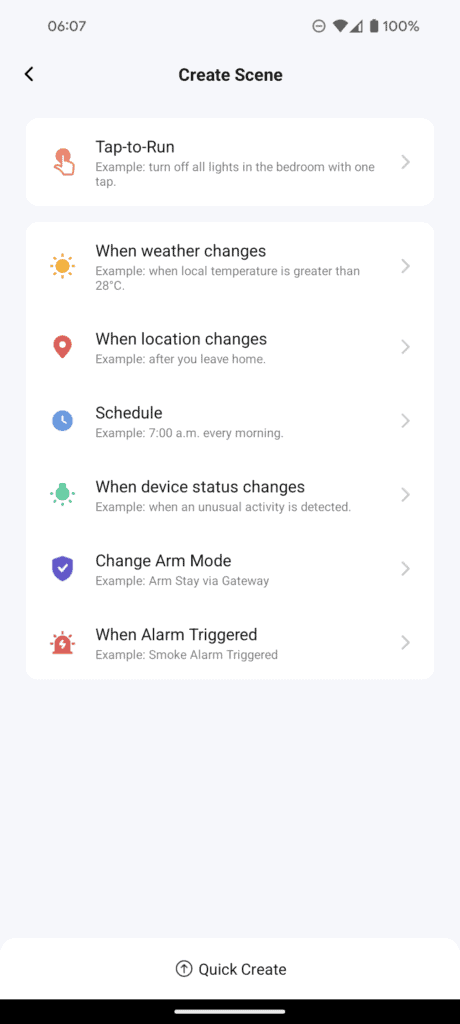
I reset the heater and then added it to Smart Life; once it was added, the main interface for the heater control was identical to the Aeno app.
The big difference is when you look at the create scene function. From here, you have a wider range of options, including location-based triggers.
Automation Features
With the Aeno app, you have options to automate the heater based on:
- Weather Conditions
- Schedule
- Device Status
With Smart Life, you have:
- Weather conditions
- Location
- Schedule
- Device Status
- Then, a couple of options for Arm/Alarm, which are used on different devices.
Furthermore, when using the Aeno app, it shows that you can add various Aeno appliances like Kettles, Fans, scales, humidifiers and air purifiers.
Smart Life has a huge range of supported devices. I already had a smart plug socket within my account, but you can also add things like cameras, lights, and various home and smart home appliances.
Perhaps more useful is that Smart Life also supports a variety of sensors, including temperature/humidity and a motion sensor, as well as various types of switches. This would, therefore, open up much more advanced home automation options.
Integration with Home Assistant
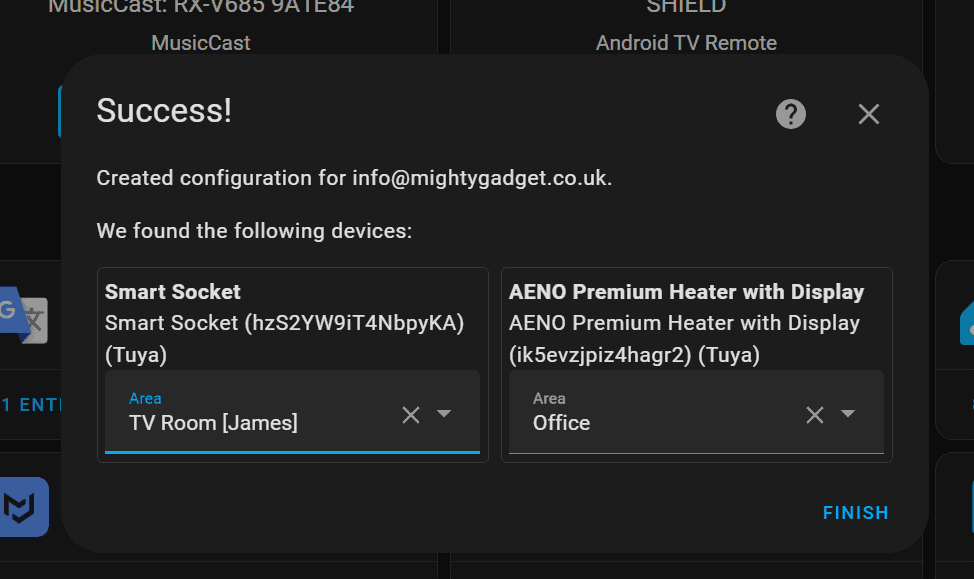
Another reason to use the Smart Life app is that you can then integrate the heater within Home Assistant, allowing it to work seamlessly with any other brand of smart home device you may have within Home Assistant.
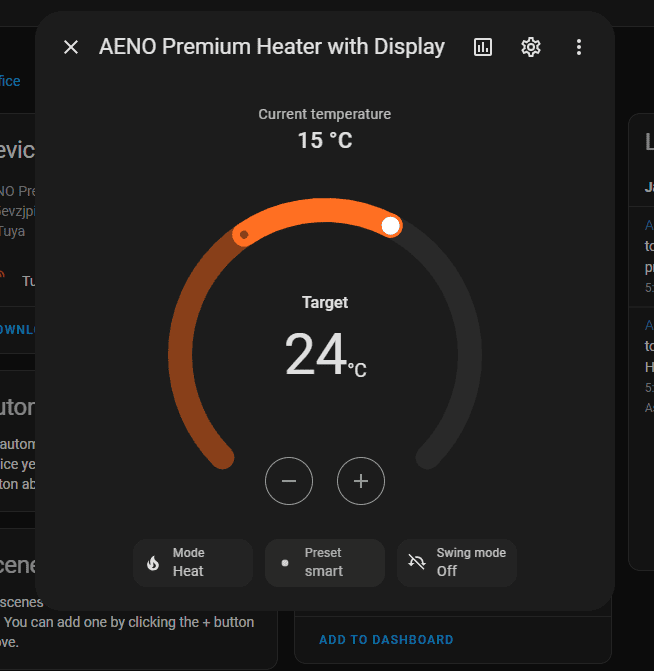
The integration requires a bit more effort than many other brands, as you have to set up a Tuya IoT platform account and create a cloud project for smart homes. The step-by-step instructions on home-assistant.io make it quite simple, and I was able to integrate both the Aeno heater and my smart power strip within about 5 minutes.
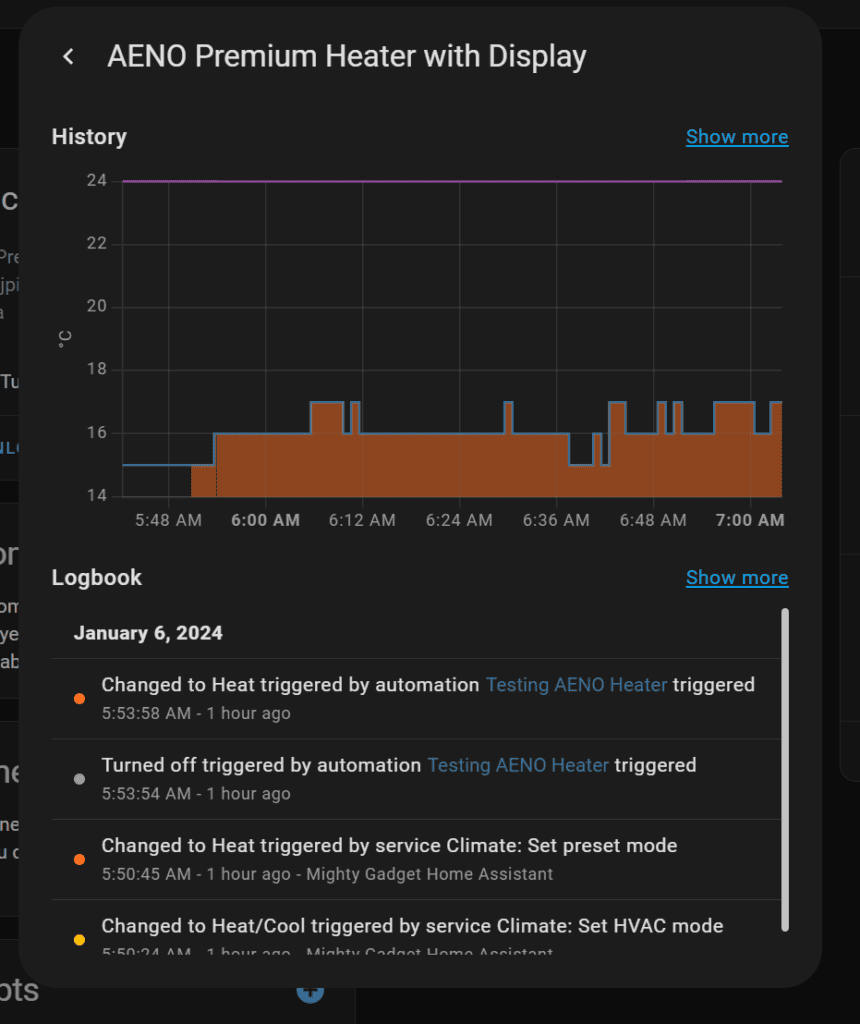
Once integrated, you can control the heater via Home Assistant with the option to switch it on/off, set the temperature and switch it to smart heating mode.
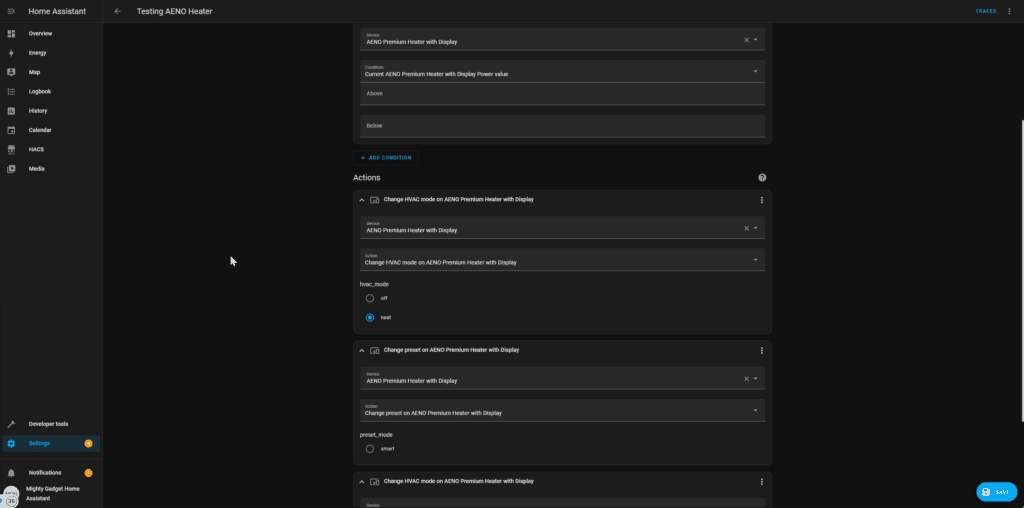
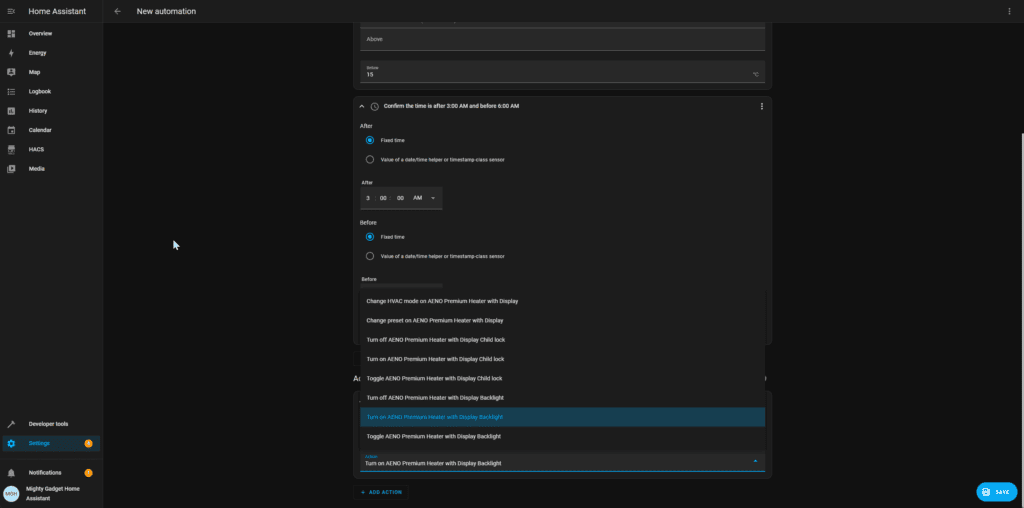
Under the automation features, you can toggle heating with the change HVAC option then select heat. You can switch it to smart heating with the change preset options, but there doesn’t seem to be a way to automate the temperature setting, it seems to select the temperature you had it on last.
Power Usage
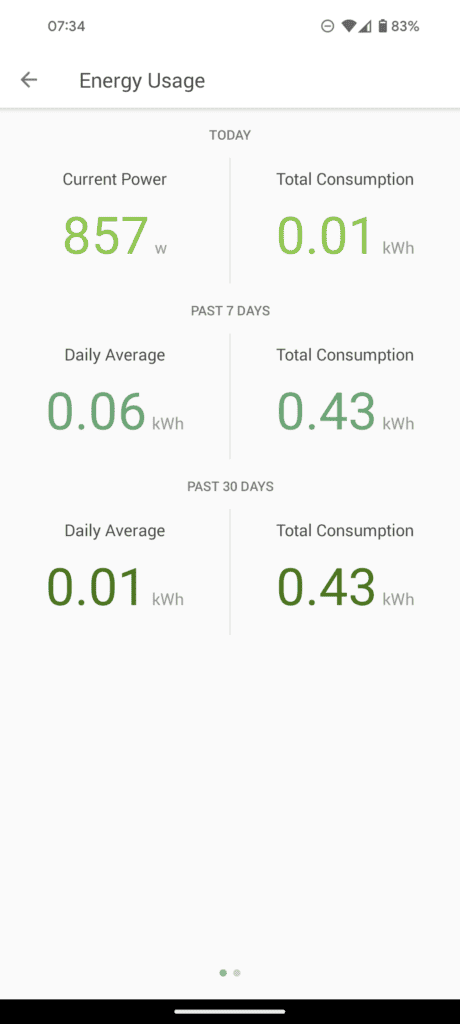
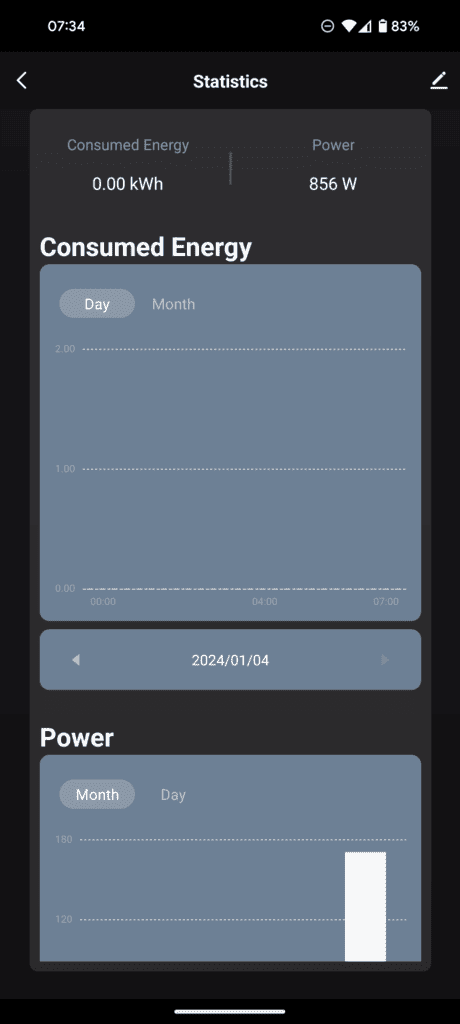
One handy feature, especially for a heater, is the built-in power monitoring. You can view the current power usage as well as historical data or the consumed energy.
Using my TP-Link TP-Link Tapo P110M smart plug, the power reading on both devices was more or less the same.
The peak power seems to be around 890W, and I can easily see how much power I use on any particular day, which is quite important nowadays due to the cost of electricity and the overall cost of living.
It is also possible to dial down the panel temperature; this will, of course, result in slower heating, but also less power consumption. You have a range from 60-120 degrees. The lower temperatures are also useful if you have children or anything else that might accidentally touch the panel.
Performance
I used the heater in my office during the testing period, which is 4.5m x 3.5m and 2.5m high, so just shy of 40m3.
I have central heating but start work at an unusual time, so being able to heat the office by itself for a couple of hours is handy.
My office would typically be 15-degree when I started work, and the heater would warm the room up to about 18-degrees within an hour.
Subjectively, I find that I often don’t like electric heating, there is something uncomfortably stuffy about it. I think this is predominantly with fan heaters. With this, the heat feels quite pleasant, just like you get off a radiator.
Price and Alternative Options
The Aeno Premium Eco Smart LED Heater [AGH0003S] is available form Currys for £259 or Appliances House for £249.95. I haven’t used Appliances House, so I can’t vouch for them, but they do have good Trustpilot reviews.
There are plenty of alternative smart glass panel heater options at a lower price point on Amazon, including:
- TCP Smart Glass Panel 2000w Heater for around £125
- BERG Far Infrared Electric Wi-Fi/Remote Control Smart Glass Panel Heater from £135 @ 480W or £255 @ 600W
- Devola Designer WiFi Enabled Electric Glass Panel Heater, which has a 2500W model priced at around £128.
Overall
The Aeno Premium Eco Smart LED Heater is an excellent smart heater. It looks good and is well made, with versatile mounting options.
The heating performance is excellent, and it is relatively economical to run compared to some options.
The smart control options are excellent, and you can extend these further by using the Smart Life app. I was also able to integrate it into Home Assistant, allowing me to integrate the heater with all the other smart devices in my home.
It is, however, priced quite high, with plenty of other smart glass panel heaters available on the market.
Personally, if I owned a property that was electricity only, I would be inclined to spend a bit extra on a heater like this around my home with it wall mounted. The combination of the overall aesthetic and the excellent smart features make it worth the additional up-front cost.
AENO Seasonal Premium Eco Smart Panel LED Heater Review - AGH0003S
Summary
The Aeno Premium Eco Smart LED Heater is an excellent smart heater. It looks good and is well made, with versatile mounting options.
The heating performance is excellent, and it is relatively economical to run compared to some options.
The smart control options are excellent, and you can extend these further by using the Smart Life app. I was also able to integrate it into Home Assistant, allowing me to integrate the heater with all the other smart devices in my home.
Overall
87%-
Overall - 87%87%
Pros
- Attractive design with flexible mounting
- Efficient heating
- Excellent smart home features
- Home Assistant integration via Smart Life / Tuya
Cons
- High Price
I am James, a UK-based tech enthusiast and the Editor and Owner of Mighty Gadget, which I’ve proudly run since 2007. Passionate about all things technology, my expertise spans from computers and networking to mobile, wearables, and smart home devices.
As a fitness fanatic who loves running and cycling, I also have a keen interest in fitness-related technology, and I take every opportunity to cover this niche on my blog. My diverse interests allow me to bring a unique perspective to tech blogging, merging lifestyle, fitness, and the latest tech trends.
In my academic pursuits, I earned a BSc in Information Systems Design from UCLAN, before advancing my learning with a Master’s Degree in Computing. This advanced study also included Cisco CCNA accreditation, further demonstrating my commitment to understanding and staying ahead of the technology curve.
I’m proud to share that Vuelio has consistently ranked Mighty Gadget as one of the top technology blogs in the UK. With my dedication to technology and drive to share my insights, I aim to continue providing my readers with engaging and informative content.

